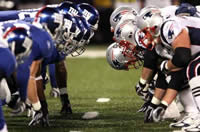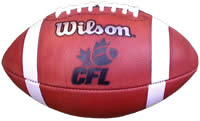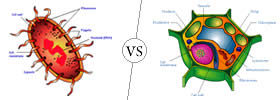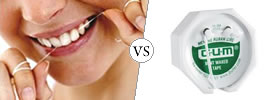Difference between American and Canadian Football
Key Difference: American Football is a sport that lasts an hour and includes 11 players on a field at a time. Canadian Football lasts about an hour and has 4 quarters of 15 minutes each. It includes having 12 players on the field at a time. The games differ in field size, ball size and certain rules and regulations.
American Football and Canadian Football have both originated from Rugby. Rugby was introduced in Canada by the British Army soldiers that were posted in Montreal. The soldiers organized games against the students of McGill University. In 1874, Harvard University invited McGill students to play the new game against Harvard students. The rules of the Canadian game differed from the US ones, however for the competition both teams decided to follow half US and half Canadian rules, resulting in the many similarities between the two games. They still differ from each other in many ways.
 American Football is a sport that lasts an hour and includes 11 players on a field at a time. The two teams line up opposite each other at the start of the game. Receiving player can either run with ball or pass the ball. Each team has to move the ball 10 yards in four down, if they fail the ball is given to the opposite team, if they pass they get another chance to move the ball another 10 yards. The objective of this game is to score points by carrying the ball to the opposing team’s end zone. Other ways points can be scored is by kicking the ball into the opposing team’s goal post, catching a pass thrown over the goal line, tackling and opposing ball carrier in his end zone.
American Football is a sport that lasts an hour and includes 11 players on a field at a time. The two teams line up opposite each other at the start of the game. Receiving player can either run with ball or pass the ball. Each team has to move the ball 10 yards in four down, if they fail the ball is given to the opposite team, if they pass they get another chance to move the ball another 10 yards. The objective of this game is to score points by carrying the ball to the opposing team’s end zone. Other ways points can be scored is by kicking the ball into the opposing team’s goal post, catching a pass thrown over the goal line, tackling and opposing ball carrier in his end zone.
Canadian Football lasts about an hour and has 4 quarters of 15 minutes each. It includes having 12 players on the field at a time. The game starts with a team being in possession of the ball, the offence, while the team defending the ball is defense. The play begins with a backward pass through the legs by a member of the offense to the team’s quarterback. The quarterback has a number of options: he could run with the ball, drop-kick the ball, pass the ball, hand off the ball, punt the ball, or throw the ball. Each play is considered as a down. The offense must advance 10 yards towards the defense’s goal posts within 3 downs, or they have to forfeit the ball. The objective of the game is to score points in various ways such as carrying the ball past opposition touch line, kicking the ball through uprights (a field goal or convert depending on situation) or by failure of a team to advance ball out of own end zone.

American football and Canadian Football differ from each other in various ways. Few major differences include the size of the field and the ball. Due to the small size of the Harvard field at that time, American football field today is 120 yards long by 53.3 yards wide, while Canadian football field is 150 yards long by 53.3 yards wide. The balls that are used in both games though resemble in shape, also differ in size. American football has a short circumference of 527 to 540 mm and a long circumference of 705 to 714 mm, while Canadian football has a short circumference of inches 530 to 537 mm and long circumference of 705 to 718 mm. The ball also has two white stripes near the ends of the ball, which is not there in American football.
Other differences also include in game play such as scrimmage, fair catches and punt returns, time, kicker advancing the ball, defensive line, if a ball fumbles out of bounds, etc. During scrimmage, in Canadian football the snap must be passed in between the center’s legs, while in American football this isn’t a requirement but happens anyways. The distance between line of scrimmage and the defensive team is a yard in Canadian football, while only 11 inches in American football.
In American football if a punt returner sees that he is unable to advance the ball after catching it, he can signal for a fair catch by waving his hand in the air. If he signals, the opposing team must allow him to catch the ball without interference. However, in Canadian football, no player from the kicking team, other than the kicker and the players behind him when the ball was kicked can approach within five yards of the ball until it has been touched by an opponent. In American football, after a fair catch, the receiving team can elect a free kick from the spot where the ball is received, however in Canadian football, only the kicker and the players behind him when the ball was kicked can make any attempts to retrieve and advance the ball.
Time rules also differ, where in American football the offensive team must run a play within 25 seconds after the referee sounds the whistle, while in Canadian football it is only 20 seconds. American football has three timeouts per team in each half, while the Canadian football only has 1 timeout per team, per half. The timing rules change drastically in both leagues after the N-minute warning. Other differences also include field goals, singles, touchbacks, kicks and safeties, but are minor differences.
|
|
American Football |
Canadian Football |
|
Number of Umpires/Referees |
3-6 referees |
Depending on the game around 3-6 referees are required. |
|
Time limit |
4 quarters of 15 minutes each. |
4 quarters of 15 minutes each. |
|
Timeout |
3 time outs in each half per team. |
1 time outs per half. |
|
Object of the Game |
The object of the game is score points by taking the ball beyond the opponent’s touch line and kicking the ball through the goal posts. |
Object of the game is to score points in various ways such as carrying the ball past opposition touch line, kicking the ball through uprights (a field goal or convert depending on situation) or by failure of a team to advance ball out of own endzone. |
|
Number of downs allowed |
4 |
3 |
|
Substitution |
Unlimited |
Unlimited |
|
Number of players |
11 on the field |
12 on the field |
|
Field |
120 yards (109.7 meters) long by 53.3 yards (48.8 meters) wide. |
150 yards (137 meters) long and 65 yards (59 meters) wide. |
|
Ball |
A prolate spheroid which has a short circumference of 20¾ to 21¾ inches (527 to 540 mm) and a long circumference of 27¾ to 28⅛ inches (705 to 714 mm). |
A prolate spheroid which has a short circumference of 20⅞ to 21⅛ inches (530 to 537 mm) and long circumference of 27¾ to 28¼ inches (705 to 718 mm). The ball has two white stripes near the ends of the ball. |
|
Protective gear |
Helmet, Shoulder/Chest pad/protector, upper leg padding and mouthguard. |
Heavy protective gear including helmet, should/chest pads, upper leg padding and mouthguard. |
|
Penalties |
Football is moved towards the opposing team’s end zone. Kicks are awarded. |
Penalties are provided by loss of yardage against the penalized team. Penalties could also include substitution of members, or penalty kicks could be awarded. |
|
Structure |
Fixed roles for every player. |
Fixed roles for every player. |
|
Scoring |
Field goal is worth 3 points, touchdown is worth 6 points, try for extra point is worth 1 or 2 points, and safety is worth 2 points |
A touchdown is worth 6 points, field goals are worth 3 points, safety is worth 2 points, while a single is worth 1 point. A conversion field goal is worth 1 point, while a conversion touchdown is worth 2 points. |
|
League |
National Football League (NFL) |
Canadian Football League (CFL) |
Image Courtesy: sportsgamesrules.com, en.wikipedia.org









Add new comment